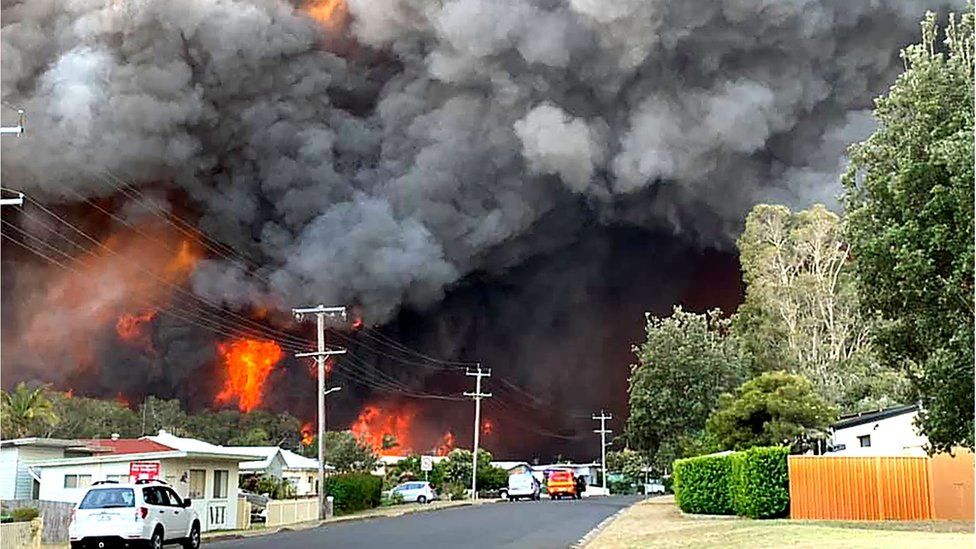Important Tips for Bushfire Monitoring to Make Sure Fire Defense

Recognizing Bushfire Danger Levels
Recognizing the varying levels of bushfire threat is crucial for efficient preparation and preparation in mitigating prospective hazards to buildings and lives. Bushfire threat degrees are usually categorized based upon aspects such as climate condition, fuel schedule, topography, and historical fire behavior. By understanding these risk degrees, individuals and areas can proactively implement strategies to minimize vulnerability and improve resilience despite potential bushfire events.
The first degree of bushfire risk is reduced danger, where the chance of a bushfire happening and triggering considerable damage is very little. High-risk levels signify a substantial danger, with problems conducive to rapid fire spread and severe fire actions.
Recognizing these bushfire threat degrees makes it possible for stakeholders to tailor their preparedness and feedback activities accordingly, making sure a positive and efficient technique to bushfire monitoring.
Establishing a Defensible Room
Effective bushfire management starts with establishing a defensible room around buildings to improve protection versus prospective fire threats. A defensible area is a buffer area that develops an obstacle between a framework and the surrounding flammable greenery. This space serves as an important line of defense, providing firemens a safe area to run and aiding to decrease the danger of a fire spreading to the building.
When developing a defensible area, it is vital to think about the design of the building and the bordering landscape. Cleaning plants, especially very flammable plants, within a particular distance of the residential or commercial property can aid prevent the fast spread of fires. In addition, preserving a well-irrigated zone around the building can additionally boost its defensibility.
Normal maintenance of the defensible area is critical to guarantee its performance. This includes trimming looming branches, clearing dead greenery, and keeping the area without particles. By spending time and initiative right into creating and maintaining a defensible space, property proprietors can considerably enhance their opportunities of securing their homes and properties throughout a bushfire.
Applying Fireproof Landscape Design
When developing landscapes to alleviate the threat of bushfires, including fire-resistant components is vital for improving home security and minimizing fire dangers. Implementing fire-resistant landscape design involves critical preparation to develop a defensible room around frameworks. Begin by selecting fire-resistant plant varieties that are much less most likely to spark and generate reduced degrees of flammable materials. Select plants with high dampness web content, reduced oil material, and very little dead plant life to minimize the threat of fire spread. In addition, keep adequate spacing in between plants and keep them effectively trimmed to stop fire from conveniently leaping in between greenery.

Producing an Emergency Situation Emptying Strategy
Establishing an extensive emergency situation emptying strategy is important for making sure the security and health of individuals throughout possible bushfire events (BMP). An effective emptying click reference strategy should lay out clear procedures to adhere to in case of a bushfire risk, consisting of assigned emptying routes, assembly points, and communication methods
To start creating an emergency emptying plan, it is essential to evaluate the certain threats and vulnerabilities of your area. Identify several emptying paths that result in secure locations far from the fire, considering elements such as surface, road ease of access, and prospective dangers. Develop interaction channels to sharp citizens of an impending emptying, using techniques such as alarms, text informs, or door-to-door alerts.
Frequently evaluation and practice the emptying strategy with all citizens or area participants to make sure every person understands their responsibilities and roles. Conduct drills to examine the performance of the strategy and make any type of needed changes. By having a well-prepared evacuation plan in position, you can boost the opportunities of a secure and orderly emptying during a bushfire emergency situation.
Preserving Fire Safety Devices
After establishing an extensive emergency discharge strategy for bushfire incidents, it is crucial to prioritize visit homepage the regular upkeep of fire safety equipment to make certain ideal performance and readiness. Regular upkeep of fire security equipment such as fire extinguishers, smoke alarm, smoke alarm, and lawn sprinkler systems is crucial in guarding lives and property throughout a bushfire. When required., conducting regular inspections, screening, and servicing of these devices by qualified specialists is necessary to assure they are in working order.
Fire extinguishers should be inspected consistently for stress degrees, noticeable damage, and proper functionality. By faithfully preserving fire security equipment, individuals can boost their readiness and response capacities in the event of a bushfire.
Verdict
Finally, efficient bushfire administration involves understanding risk degrees, developing defensible rooms, implementing fireproof landscape design, establishing evacuation plans, and keeping fire safety tools. By adhering to these essential suggestions, individuals can make sure much better fire security and safety and security for their residential or commercial properties and neighborhoods. It is necessary to prioritize aggressive measures to mitigate the risks linked with bushfires and to be planned for emergency situations.
By recognizing the nuances of bushfire threat levels, creating defensible spaces, executing fire-resistant landscaping, producing detailed evacuation plans, and guaranteeing the maintenance of fire safety and security tools, areas and individuals can dramatically bolster their resilience against the devastations of wildfires - BAL Report. These ideas are not just important for protecting against immediate fire dangers but likewise for promoting long-lasting fire protection methods that can make a substantial difference in the face of intensifying bushfire hazards
High-risk levels symbolize a substantial danger, with problems conducive to rapid fire spread and severe fire actions. Regular maintenance of fire safety and security devices such as fire extinguishers, smoke detectors, fire alarm systems, and sprinkler systems is essential in guarding lives and property during a bushfire.In conclusion, reliable bushfire management entails understanding risk levels, developing defensible spaces, carrying out fireproof landscaping, check out this site creating evacuation strategies, and maintaining fire safety devices.
Comments on “Grasping Bushfire Readiness: The Duty of a BAL Assessment in Risk Mitigation”